Problems in Sri Lanka
Sri Lanka currently has some problems in aquatic environment and I carefully examine them. Honestly speaking, I am stunned by its seriousness. I also investigated the similar issues in Japan and Western countries. I suspected the main cause of C.K.D (chronic kidney disease) was the chemical fertilizer and figured out some evidence backing up my prospect in the tap water collected in Colombo. The data reported by the Sri Lanka government also proves it. Overuse of chemical fertilizer deteriorates the soil and decrease the production output and plague farmers on C.K.D. I strongly felt that I had to do something to improve the situation and I believe that our technology can contribute for solving the problems. I mention the countermeasures below;
1. On August 7th, 2011, Ayurveda Research Center in Sri Lanka reported that over one million people that have been so far known suffer from C.K.D., and there seem to be 1.24 million people in the northern region. This is not over estimated and the real number should be more. In short, about 10 % of entire population in the country suffer from the disease. C.K.D. in Sri Lanka is not complicated by diabetes and develops in the middle age (68% of patients are between the age 45 – 70 in Polonnaruwa district). It could be the genetic factor but the clear evidence has not been found.
C.K.D. has started to spread out since the late 1970s, when farmers began to use the chemical fertilizer, and the patients are increasing logarithmically. The ground water was once suspected as the cause of C.K.D., but later on, as a result of investigations conducted by University of Tokyo in 2008 and the joint research by University of Kyoto and Peradenia University in Sri Lanka in 2012 (for two years), it was concluded that the ground water could not be the cause of C.K.D. (although the water was polluted by cadmium, fluorine, and arsenic, they must not be the main source of C.K.D.).
2. In Japan, on the other hand, the number of C.K.D patients are 13.3 million. It is about 10% of entire population, or one eighth of entire adults. There are 370 thousands patients who have to do the dialysis treatment and the number is increased by 38 thousands every year (due to the fact that approx. 28 thousands die per year, the actual increase is about 10 thousands). It overwhelmingly outnumbers the 1.2 million patients in cancer, and it has become the Japanese national disease already. C.K.D patients have begun to increase since 1980, and compare to 10 thousands patients in 1975, it’s grown more than 30 times for about 30 years. It is consistent with the time when people started to use chemical fertilizer in Japan.
In fact, Japan used the most agrichemical/chemical fertilizers in the world until last year overtaken by South Korea. Compared with the area under cultivation, however, Japan still uses 6 times more agrichemical/chemical fertilizers than Germany. It is natural to suspect the correlation between C.K.D and agrichemical/chemical fertilizers, and a lot of people think the cause of C.K.D. is nitrate and nitrite contained in vegetables and ground water. When excessive agrichemical/chemical fertilizers are given to earth, nitrate remains in the vegetables by the incomplete photosynthesis of nitrogen. According to the report from British Agricultural Policy Research, a human acquires 70% of nitrate from drinking water, 21% from vegetables, 6% from meat and meat related products, and 2.7% from other food. In the past, 278 American babies got poisoned by the milk made with ground water containing highly-concentrated nitrate, and 39 of them died because of it.
There is no regulation about the concentration of nitrate in vegetables in Japan, but the EU standard decided in 1999 regulates that nitrate should contain lower than 2500mg/kg in the raw spinach and lower than 2000mg/kg in the processed one. The vegetables higher than these numbers are considered as polluted. Although the clear correlation between nitrate and C.K.D. has not been confirmed in Japan, the prefectures which have many dialysis patients and ones with many greenhouses or tea farmers strangely coincides with each other.
3.Several staff members of my company visited Sri Lanka in December 2013 and brought some tap-water of Colombo back to Japan for investigation. Its source is the ground water and the result of analysis shows that the water relatively contains more nitrate ion and sulphate ion than other tap water. Actually its concentration of nitrate is 13 times more than the water in Toshima area of Tokyo. With the consideration of the fact that a lot of farmers in Sri Lanka use the ground water (in fact the sample water is deemed to be one of the best ones in the country), we need to investigate further and more carefully. These nitrate ion and sulphate ion are the ingredients of agrichemical/chemical fertilizers. Therefore, we suggest the following countermeasures in order to solve the problem;
4. Present Situation of Agricultural System with No Agrichemical/Chemical Fertilizers in Mongolia
My company had tested the agricultural method of electrolysis water without using agrichemical/chemical fertilizers from 2008 to 2011 in Dalian of China, and from April 2013 to October 2013 in Mongolia.
It is general in Japan, and one of the most famous companies using this method is Kagome Inc., which produces ketchup and tomato juice. They completely adopt the electrolysis water farming system for their tomato farms. Although Dalian and Mongolia are generally too dry and cold to produce farm products, we succeeded to obtain some good results. In Mongolia, we also tested potatoes, spinaches, and cucumbers with Mongolian University of Agriculture and National Agricultural Experiment Station.
5. Our electrolysis water farming method uses bamboo powder mixed with cattle manure and fowl droppings. I heard that bamboo is managed by Sri Lanka government, but its use is only for scaffolding. It can be very good and inexpensive substitute of chemical fertilizers for we can get them abundantly from the local area. The electrolysis water and bamboo have a good compatibility each other, and bamboo powder includes a lot of growth hormone, microbe such as lactobacillus, and minerals to fertilize the soil.
6.In this way, electrolysis water can produce good quality products without using any agrichemical/chemical fertilizers, and also it can eliminate toxic chemicals accumulated in soil easily and effectively. All you have to do is scatter the water once a week.
As for the solution of contaminated ground water, we need to cut off its cause completely. Our farming method is not just installing the machinery at the local farms. We create highly concentrated electrolysis water at a refining factory and dilute it with the local water. With this method, the farmers can keep the initial cost low rather than purchasing the machinery. The diluted water can detoxify heavy metal ion in the ground water such as nitrate ion, sulphate ion, arsenic ion, and cadmium. The dilution rate is about 1:30 to 1:40 so the cost is quite low. Scattering 200 litters per 10a (1000 m2) once a week should be enough if it’s a tea farm.
7.At last, we need to make the toxic ions such as sulphate, arsenic, and cadmium into lead-free. I list the chemical formulas below; The true character of alkali electrolysis water is aqueous solution with abundant potassium hydroxide, and the acid electrolysis consists of hypochlorous acid.
I introduce our water purification product. It’s called SARES (Semi Automatic Re-Electrolysis System) and it is the first unilateral electrolyzed water drainage system in the world and has the following functions;
1) Elimination of heavy metals contained in the water
2) Creation of lead-free seawater
3) Decomposition of sulfuric acid and hydrochloric acid
4) Neutralization of acid lake
5) Reproduction of oil
Other similar products can process nothing but merely purification.
I also want to emphasize these advantages of our product below;
1) Compact and portable
2) Easy assembly/disassembly (takes only 10 min to assemble)
3) Able to provide stable output under small or unstable voltage
4) Able to create either only acid or alkali water (other products always produce both)
5) Creates highly-concentrated electrolysis water (from pH1.0 to pH14.0)
6) Very little salt residues (0% in alkali water/ below 0.014% in acid water)
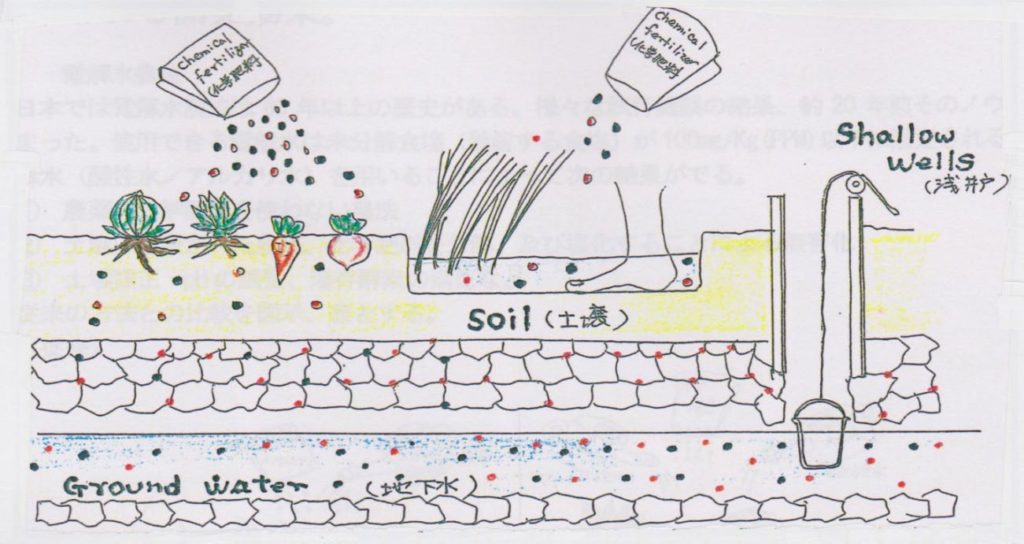
The university of Tokyo and Kyoto were not conducting investigation of nitric acid-ion and sulfuric acid-ion. So, we are going to check the density of NO3- and SO42- including Sri Lankan soil ground water, vegetables fruit, tea and etc.

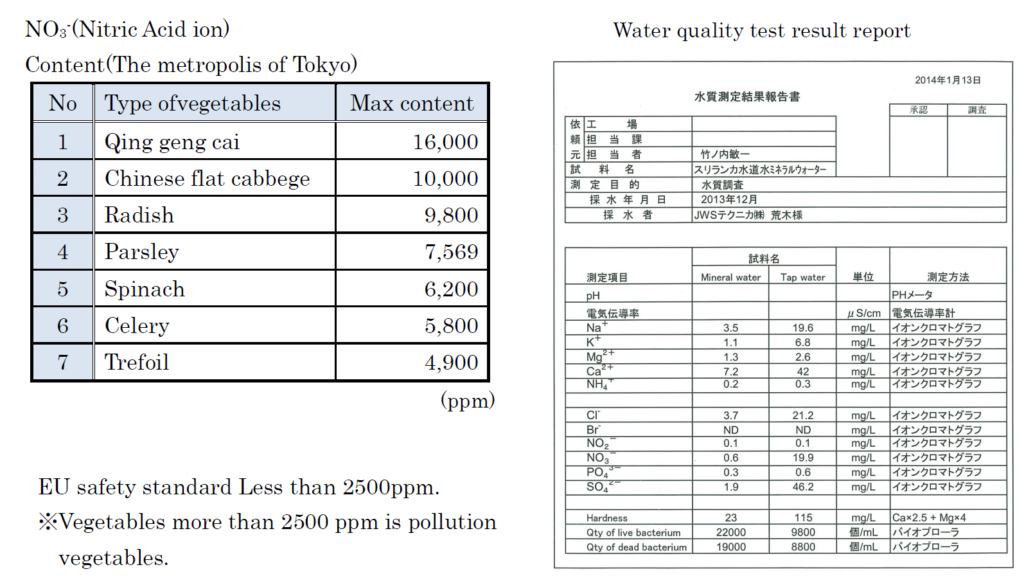
Electrolysis water Agriculture technique (E.A.T)
- In japan, E.A.T has 60 years of history and we have known how firm about E.A.T now.
- In order to use Electrolysis water for agriculture, there are same conditions.
The most important condition is that salt is not mixing into electrolysis water.
If salt is condition in Electrolysis water, soil damage from salt water arise.
The concentration of the salt which remains in our Electrolysis water is as follows.
Alkali side water 0ppm
Acid side water 82ppm - Electrolysis water remove the agriculture chemicals pesticide and chemical fertilizer which were accumulated into soil.
- In addition, Electrolysis water performs adjustment of pH of soil, supply of oxygen and potassium-ion.
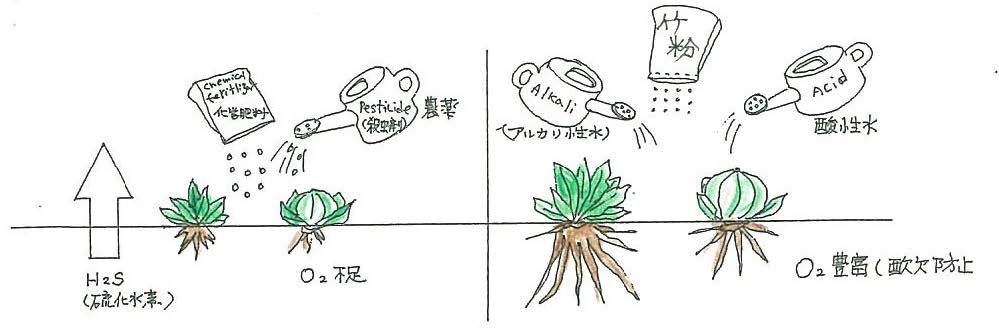
- Nitric acid-ion and sulfuric acid-ion are formed more into the ground, using chemical fertilizer
too much. And the soil inclines to the acidity.
A. (NH4)2 SO4 → 2NH4 + SO42-
SO42- + 2KOH → K2SO4
KSO4 is natural salt → The pH level does not fall.
Dissolution level of K2SO4 is 4,76g/100g
B NH4NO3 →NH4 +NO3–
NO3– + KOH → KNO3
KNO3 is natural salt → The pH level does not fall.
※ Soil acidifies and disease germs.
Such as Rhizoctonia, Pythium and Fusarium increases by it.
Result of sterilization test

- Dilution system
〔Chemical equation〕 - Sulfuric acid-ion SO42- + 2K+ → K2SO4
- Nitric acid-ion NO3– + K+ → KNO3
- Arsenic(AS) AS3– + 3K+ → K3AS
- Fluoride(F) F– + K+ → KF
- Cadmium(Cd) Cd2+ + 2(OH)– → Cd(OH)2
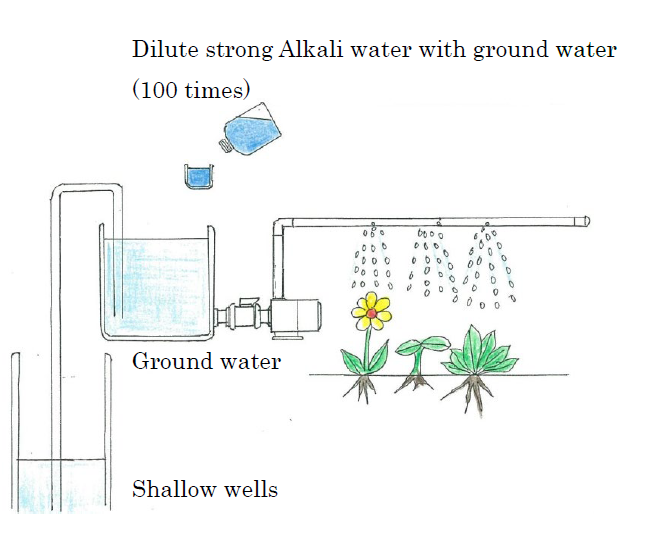
- Electric dialysis system
(1)JWS Electrolysis / dialysis technology can easily remove solution include in the ground water.
(2)About cost
A: The initial cost is about 1/100 of R.O system.
B: The running cost is very cheap too(Look at the next list).
Electric dialysis system
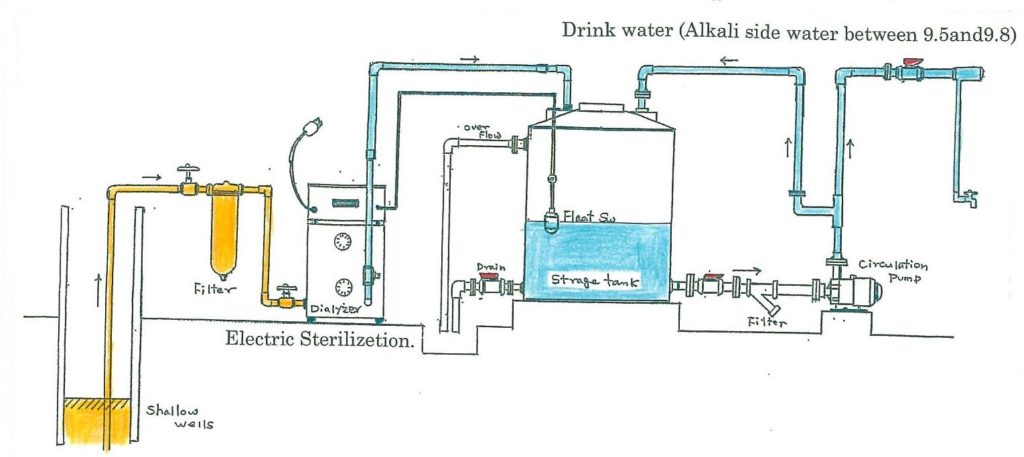
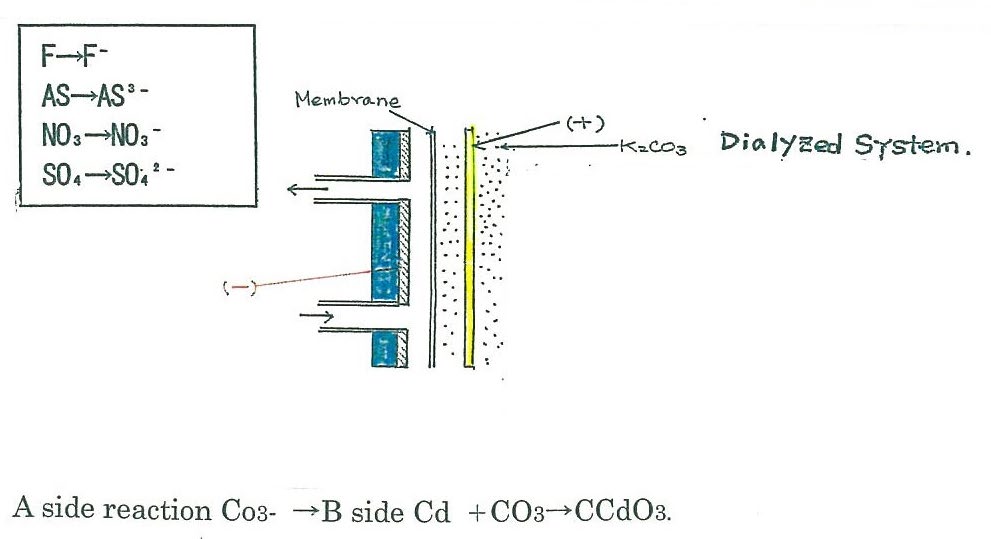

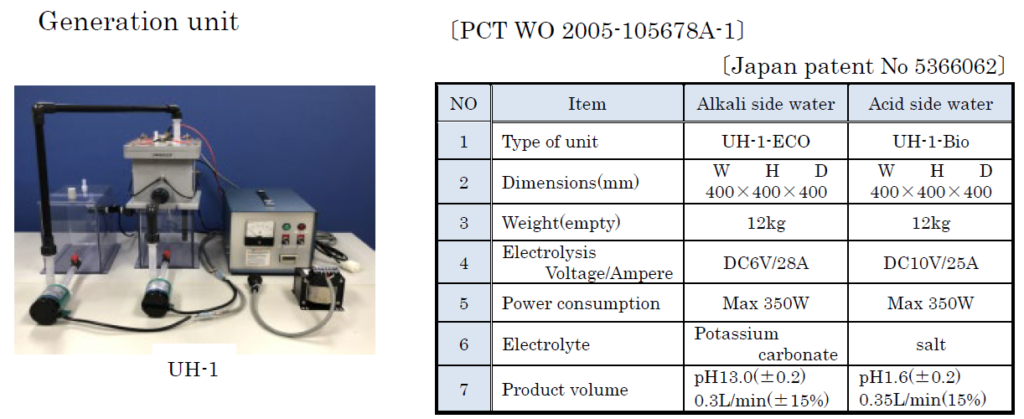
Characteristics
(1) It is very compact.
The size is carrier background contains.
(2) The resolution and assembling are simple (10 min).
(3) Can use the voltage in the unstable place.
(4) The UH-1-ECO type generates only Alkali side water and overflows (It is beginning in the world).
(The UH-1-Bio Type Acid side water only)
(5)UH-1 unit can produce highly-concentrated electrolysis water (It is beginning in the world.)
(6)Very little undecomposed salt(Alkali side 0ppm Acid side 82ppm).
Safety of Electrolysis water
Based on O.E.C.D. guidance for the testing of chemical (1987).
We have conducted safety confirmation test for Electrolysis water.
All the result form the tests confirm that Electrolysis water (pH13.0) is “nonirritant”. Safety is very important factor.
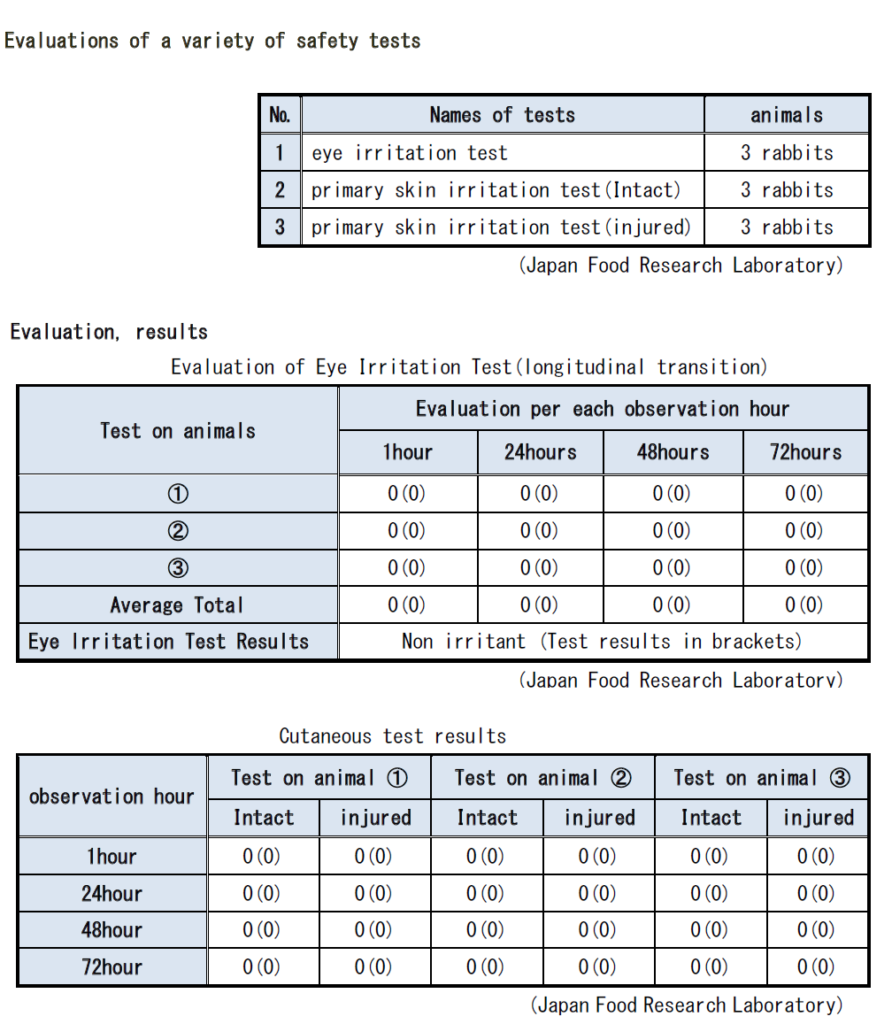
The category of Acid side water is “nonirritant” too.
